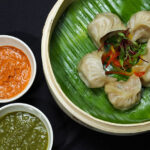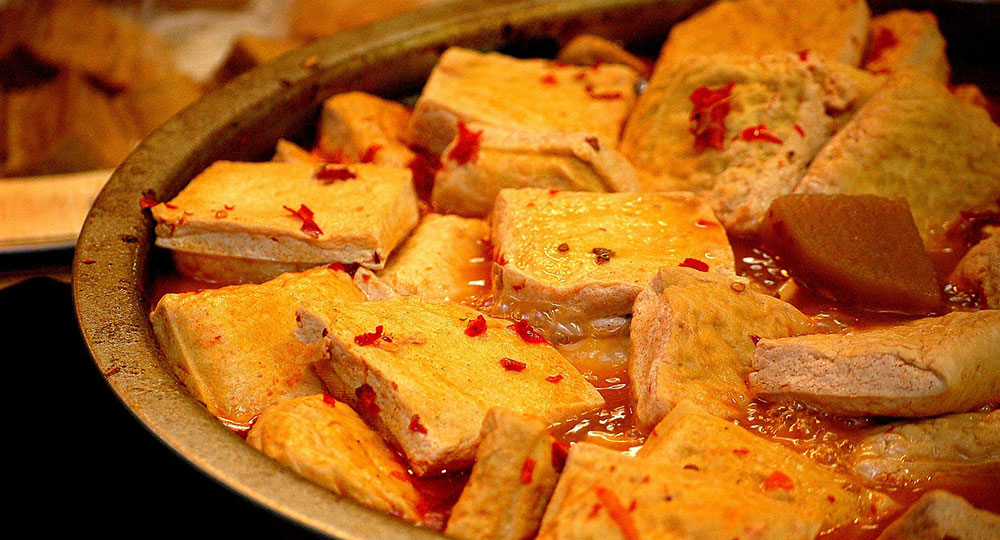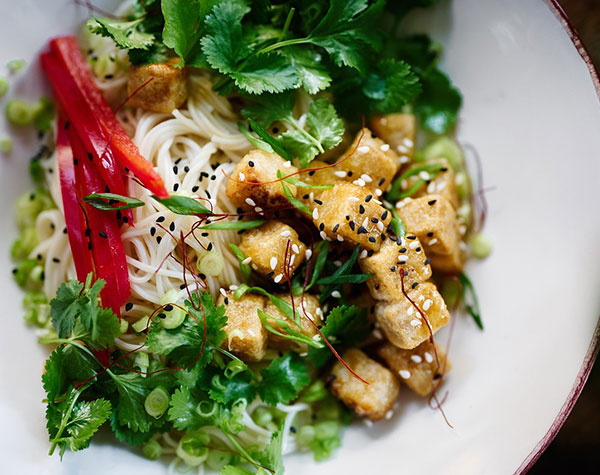
Indian Puri: A Staple in Vegetarian Recipes
August 7, 2024
Vegetarian Momos in Bhutan: A Delightful Fusion of Flavor and Tradition
August 11, 2024
Indian Puri: A Staple in Vegetarian Recipes
August 7, 2024
Vegetarian Momos in Bhutan: A Delightful Fusion of Flavor and Tradition
August 11, 2024
The Nutritional and Culinary Significance of Tofu
Tofu, also known as bean curd, is a staple ingredient in vegetarian and vegan diets worldwide. Made from soybeans, tofu is an excellent source of plant-based protein, making it a popular meat substitute. Its neutral flavor and versatile texture allow it to be incorporated into a wide variety of dishes, from savory to sweet. Tofu's adaptability and nutritional benefits make it an essential component in many vegetarian recipes, offering endless culinary possibilities.
50 mins
Hard
Serves 6
Origins and Production
Tofu's origins date back over 2,000 years to ancient China, where it was first made by curdling fresh soy milk and pressing the curds into solid blocks. The process begins with soybeans, which are soaked, ground, and boiled to create soy milk. This milk is then coagulated using a coagulant, such as calcium sulfate or magnesium chloride, to form curds. These curds are then pressed into blocks, resulting in the tofu that we recognize today. Depending on the degree of pressing, tofu can be categorized into various types, including silken, soft, firm, and extra firm, each with its own distinct texture and culinary uses.
The Nutritional Powerhouse
Tofu is highly regarded for its impressive nutritional profile, making it a staple in vegetarian, vegan, and health-conscious diets. Here's a breakdown of its key nutritional benefits:
Protein Content
Tofu is an excellent source of plant-based protein. A 100-gram serving typically provides around 8 grams of protein, which includes all nine essential amino acids that the body cannot produce on its own. This makes tofu a complete protein, similar to animal-based proteins, and an important dietary component for muscle repair, growth, and overall health.
Low in Calories and Fat
Tofu is relatively low in calories, with about 70-80 calories per 100 grams, depending on its firmness. It is also low in fat, particularly saturated fat, making it a heart-healthy food choice. The fats present in tofu are primarily polyunsaturated and monounsaturated fats, which are beneficial for cardiovascular health.
Rich in Micronutrients
Tofu is a good source of several important micronutrients, including:
- Calcium: Tofu, especially when made with calcium sulfate as a coagulant, is rich in calcium, providing about 10-15% of the daily recommended intake per serving. Calcium is essential for bone health and plays a crucial role in muscle function and nerve transmission.
- Iron: Tofu contains about 1.5-2 mg of iron per 100 grams, which is important for oxygen transport in the blood and overall energy levels.
- Magnesium: Tofu provides magnesium, a mineral involved in over 300 biochemical reactions in the body, including muscle and nerve function, blood glucose control, and protein synthesis.
- Phosphorus: This mineral is important for the formation of bones and teeth, as well as for the proper functioning of cells.
Low in Carbohydrates
Tofu is low in carbohydrates, typically containing about 2 grams per 100-gram serving. This makes it suitable for low-carb and ketogenic diets.
Isoflavones and Antioxidants
Tofu is rich in isoflavones, which are plant compounds that have antioxidant properties. Isoflavones have been studied for their potential health benefits, including reducing the risk of heart disease, improving bone health, and alleviating menopausal symptoms. The most notable isoflavones in tofu are genistein and daidzein, which mimic the effects of estrogen in the body and may help in balancing hormone levels.
Low Sodium
Tofu is naturally low in sodium, making it a suitable option for those monitoring their sodium intake for blood pressure management and heart health.
Cholesterol-Free
Being a plant-based food, tofu is completely free of cholesterol, which is beneficial for maintaining healthy blood lipid levels and reducing the risk of heart disease.
Fiber Content
While tofu itself is not particularly high in dietary fiber, it is often combined with high-fiber foods like vegetables, grains, and legumes in various dishes, contributing to a balanced and fiber-rich diet.

Tofu in Traditional Vegetarian Recipes
Tofu has been a cornerstone in Asian cuisines for centuries, particularly in countries like China, Japan, and Korea. Traditional recipes such as Mapo Tofu and Miso Soup highlight tofu's ability to absorb and enhance the flavors of other ingredients. In Mapo Tofu, for instance, the tofu soaks up the spicy and savory sauce, creating a dish that is both satisfying and rich in flavor. Similarly, in Miso Soup, soft tofu cubes float in a umami-rich broth, providing a delicate texture that contrasts beautifully with the soup's savory notes.
Modern Vegetarian Creations
In recent years, tofu has become a favorite ingredient in modern vegetarian and vegan cooking. It can be grilled, baked, stir-fried, or even blended into smoothies and desserts. For example, Tofu Scramble is a popular breakfast dish that mimics scrambled eggs, making it a perfect choice for those looking to reduce their egg consumption. By crumbling firm tofu and sautéing it with spices like turmeric, black salt, and nutritional yeast, one can create a delicious and protein-packed breakfast that closely resembles the taste and texture of scrambled eggs.
Another innovative use of tofu in vegetarian recipes is in making Tofu Steaks. By marinating thick slices of extra-firm tofu and grilling them, you can create a hearty and satisfying dish that pairs well with vegetables, grains, or salads. The tofu's ability to absorb the flavors of the marinade ensures that each bite is bursting with taste, making it an excellent centerpiece for a vegetarian meal.
Tofu in Sweets and Desserts
Tofu is not limited to savory dishes; it can also be used in sweet recipes. Silken Tofu is particularly well-suited for desserts due to its smooth, creamy texture. It can be blended into puddings, cheesecakes, and smoothies, offering a healthier alternative to dairy-based ingredients. For instance, Tofu Chocolate Mousse is a decadent yet nutritious dessert that uses silken tofu as its base. When blended with melted dark chocolate and a sweetener, the tofu creates a rich and creamy mousse that is both satisfying and guilt-free.
Conclusion
How to cook "Basic Pan-Fried Tofu"
Cooking tofu is straightforward, but the method you choose depends on the type of dish you're preparing. Here are some popular ways to cook tofu, along with tips to enhance its flavor and texture.
Ingredients:
Here’s a simple guide to cooking Basic Pan-Fried Tofu:
- 1 block firm or extra-firm tofu
- 2 tablespoons cooking oil (such as vegetable, sesame, or olive oil)
- 2 tablespoons soy sauce (optional for seasoning)
- Salt and pepper (to taste)
- 1 tablespoon cornstarch (optional, for extra crispiness)
Instructions:
-
Press the Tofu:
- Remove the tofu from its package and drain any excess water.
- Wrap the tofu in a clean kitchen towel or paper towels and place it on a plate.
- Place a heavy object (like a skillet or a few cans) on top of the wrapped tofu.
- Let it sit for 15-30 minutes to press out excess moisture.
-
Cut the Tofu:
- After pressing, unwrap the tofu and cut it into cubes, slices, or triangles, depending on your preference.
-
(Optional) Coat with Cornstarch:
- If you want your tofu to be extra crispy, lightly toss the tofu pieces in cornstarch. This will help create a crispy exterior when frying.
-
Heat the Oil:
- Heat 2 tablespoons of cooking oil in a large non-stick skillet over medium-high heat.
-
Cook the Tofu:
- Once the oil is hot, add the tofu pieces to the skillet in a single layer. Make sure not to overcrowd the pan to allow even cooking.
- Cook the tofu for about 3-4 minutes on each side, or until each side is golden brown and crispy. Avoid moving the tofu around too much to let it develop a good crust.
-
Season:
- Once the tofu is crispy and golden on all sides, drizzle it with soy sauce (if using) and season with salt and pepper to taste. Toss the tofu in the pan to evenly coat it with the seasoning.
-
Serve:
- Remove the tofu from the skillet and place it on a paper towel-lined plate to drain any excess oil.
- Serve immediately as a snack, or add it to salads, stir-fries, rice bowls, or noodles.
Tips:
- Variety of Flavors: You can experiment with different seasonings and sauces to match the dish you’re preparing.
- Batch Cooking: If you’re cooking a large amount of tofu, fry it in batches to avoid overcrowding the pan, which can make the tofu soggy instead of crispy.
This basic pan-fried tofu recipe is quick, easy, and can be used as a versatile protein source in a variety of dishes.

